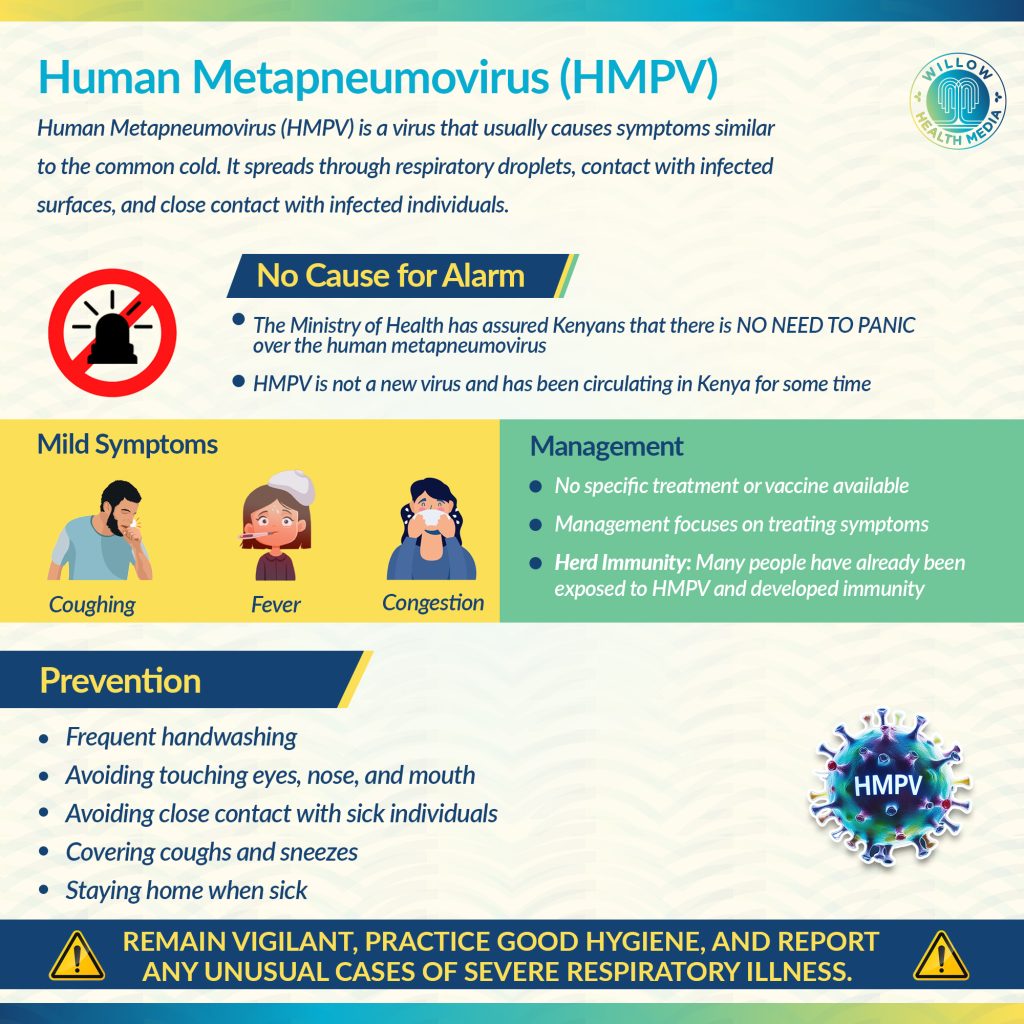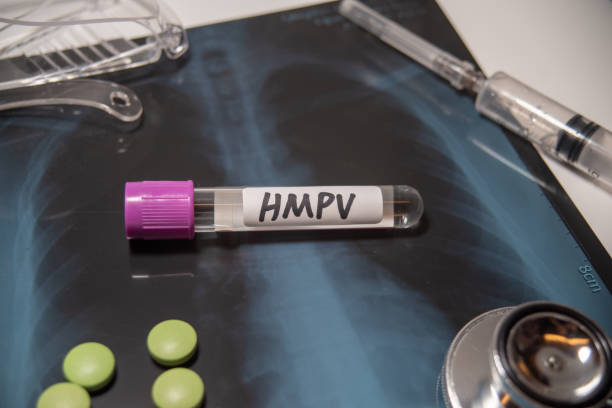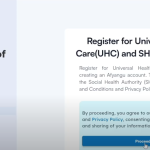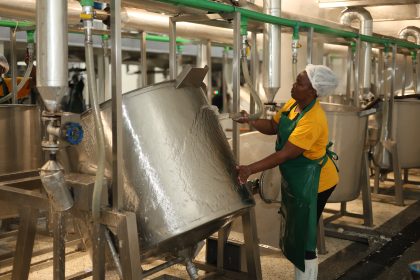Symptoms of HMPV include cough, fever, nasal congestion, and shortness of breath
The Ministry of Health has assured Kenyans there is no cause for alarm over the Human Metapneumovirus (HMPV).
In a statement on the social media platform X, the Ministry of Health stated that HMPV is not a new virus and has been documented as a circulating pathogen contributing to respiratory illnesses within Kenya.
“The national public health surveillance system is on high alert, and there is no reported increase in the expected number of patients presenting with respiratory symptoms,” the statement read in part.
HMPV can cause upper and lower respiratory disease in people of all ages, especially among young children, older adults, and people with weakened immune systems, according to the Centers for Disease Control and Prevention (CDC) which also added that HMPV was discovered in 2001 within the Pneumoviridae family, along with respiratory syncytial virus (RSV).
Symptoms include cough, fever, nasal congestion, and shortness of breath. According to the CDC, clinical symptoms may progress to bronchiolitis or pneumonia and are similar to other viruses that cause upper and lower respiratory infections.
“The incubation period is three to six days, and the median duration of illness can vary depending upon severity but is similar to other respiratory infections caused by viruses,” says CDC which elaborates that HMPV typically spreads from an infected person to others through secretions from coughing and sneezing and close contact such as touching or shaking hands.
It can also be spread by touching objects or surfaces that have viruses on them and then touching the mouth, nose or eyes.
The CDC recommends that people can protect themselves from contracting HMPV by washing their hands often with soap and water for at least 20 seconds, avoiding touching their eyes, nose or mouth with unwashed hands, and avoiding close contact with people who are sick.
“Patients who have cold-like symptoms should cover their mouth and nose when sneezing and coughing, and wash their hands frequently and correctly. They should also avoid sharing their cups and eating utensils with others, refrain from kissing others, and stay at home when they are sick,” the CDC advises.
Additionally, cleaning possible contaminated surfaces, such as doorknobs and shared toys, may potentially help stop the spread of the virus.

According to a post by Dr Ahmed Kalebi, a Consultant Pathologist, on his X account, the HMPV has been in circulation since 2001 and is now part of seasonal flu viruses worldwide. Therefore, herd immunity to HMPV already exists globally.
“Most people would have been infected by metapneumovirus by the time they turn five years old, thus most people have a natural immunity to HMPV. The majority of people do not need to be worried about HMPV because they were already exposed before,” part of the post reads.
Dr Kalebi explains that since most people get infected by the age of five and recover, the virus rarely causes further severe illness among adults as they have some form of natural immunity following exposure in childhood. He also notes that immunocompromised adults may be at risk of severe HMPV infection.
“Even in Kenya, people get HMPV, and because it is self-limiting, we do not spend all our health budget diagnosing them,” explains Prof Matilu of the Kenya Medical Research Institute (Kemri).
According to him, a polymerase chain reaction (PCR) test is used in the diagnosis of HMPV because it is an RNA virus, meaning it has genetic material that can be used in the diagnosis.
The CDC explains that infection with HMPV can be confirmed by direct detection of viral genome by nucleic acid amplification tests (NAAT) or direct detection of viral antigens in respiratory secretions using immunofluorescence or enzyme immunoassay.
Prof Mwau also explains that since there is no treatment or vaccine for HMPV, management is based on the individual’s presented symptoms.
The Ministry of Health has advised Kenyans to remain vigilant, continue observing public health practices such as hand hygiene and respiratory etiquette, and report any unusual cases of severe respiratory illnesses.
The Chinese Centre for Disease Control and Prevention reported a sharp increase in respiratory viral infections, including HMPV infections in Northern China in December 2024.
However, according to the World Health Organization, China’s reported levels of acute respiratory infections, including the HMPV, are within the expected range for the winter season, with no unusual outbreak patterns reported.
The WHO also states that in temperate climates, seasonal epidemics of common respiratory pathogens, including influenza, occur often during winter periods.
“The observed increases in acute respiratory infections and associated pathogen detections in many countries in the Northern hemisphere in recent weeks is expected at this time of the year and is not unusual,” the WHO declared in a statement on its website.
WHO recommends that individuals in areas experiencing winter take normal precautions to prevent the spread and reduce risks posed by respiratory pathogens, especially to the most vulnerable.
WHO also advises people with mild symptoms to stay at home to avoid infecting other people and rest, and those at high risk or with complicated or severe symptoms to seek medical care as soon as possible.





















